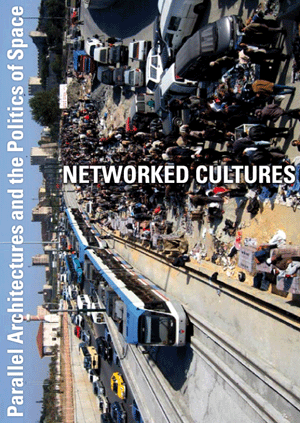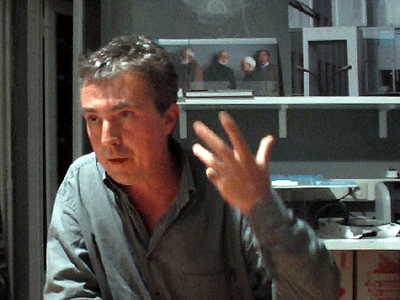_loginregistrieren_database_5 Factories - Worker Control in Venezuela Dario Azzellini & Oliver Ressler _ALMOSTREAL ECF _AnArchitektur Jesko Fezer _Arizona Road Azra Aksamija _Balkan Konsulat rotor _Bata-ville: We are not afraid of the future Nina Pope + Karen Guthrie / www.somewhere.org.uk _Black Benz Race krcf in collaboration with Felix Stalder, Arben Gecaj, Faton Topalli and Osman Osmani _Black Sea Files Ursula Biemann _Camp La Jolla Military ParkOwen Mundy _CHANGE REALITY: Renaming the Streets of Zagreb REINIGUNGSGESELLSCHAFT _Conceptual Paradise. There is a place for sophistication Stefan Roemer _de-regulation Irit Rogoff, Kutlug Ataman, Stefan Roemer_news ____________Bloomberg SPACE, London ____________Kumu Art Museum Tallinn ____________Open Space, Open Systems - Vienna ____________CAA 2011 Conference, New York ____________Forum Stadtpark, Graz ____________Symposium, Istanbul ____________lungomare, Bozen/Bolzano ____________Metropolis Biennale 2007-17, Copenhagen ____________new publication available now ____________Mestna Galerija, Ljubljana ____________Livestream of Networked Cultures documentary ____________ |
_ConversationsStefano Boeri
Stefano Boeri
PM/HM: Given the dynamics of the current transformation of the cultural landscape in Europe, in which ways do you think the field of architecture needs to reinvent itself? Stefano Boeri: I don’t believe that rethinking the role of architecture in contemporary societies can be connected solely to enhancing the sophistication of design in our discipline. The question today is not how to intervene better in the complexities of our societies and introduce local improvements or local solutions. I don’t quite trust the capacity of contemporary architecture to deal with a dimension of structural dynamics that can only be solved within the political sphere itself, and I don’t adhere to the idea that architecture can update its technical tools by facing what’s happening in a local context. From a certain point of view, this would just be an alibi for politicians; while from another point of view, it would be a way to eliminate the assumption that architecture is able to control and determine the future of physical environments. Instead, one of the most interesting and probably important things that architectural practice can commit itself to – and this applies more to research than design – is the expansion of knowledge with regard to what is occurring and will take place in future environments and local spaces. We’ve been trained to observe the surface of things, and in this sense we are adept witnesses of processes that only manifest themselves on the skin, on the physical layer of our environment. Our discipline may, in fact, be one of the most sophisticated tools at our disposal for observing the physical layer of contemporary transformations. And these can in turn be used as metaphors to describe the social and structural layer of ongoing processes. PM/HM: You’ve described the periphery as a mobile situation in which centres become peripheries in the sense that they have moved outside the focus of hegemonic political interest and are increasingly populated by what’s considered the margins of culture. So peripheries have become part of an “archipelago” economy. How can architecture relate to this field of peripheral productivity? Stefano Boeri: As architects, it’s fundamental that our vocabulary represents the actual sense of things, particularly in relation to physical transformations that might be taking place. From this point of view, the notion of periphery is now extremely weak and what happened in the Paris banlieues in November 2005 was a demonstration of this. The periphery of the contemporary European city is more like an archipelago than a ring, in terms of its geometrical distance from a city’s central areas. Naples, Genoa and Paris display, for example, many peripheries or hyper-central niches. In fact, the notion of periphery should be completely redefined from our own perspective, from that of a profession that is close to the physical context. This is something we can actually do as architects, because it’s our unequivocal social capacity. The fact that I’ve spent a lot of time in the last years demonstrating how, in my opinion, design and research operate in completely different spheres is probably connected to my personal background in Italy. As you know, this involved the experience of the Italian tendenza in the 1970s: Foucauldian discourse in which thinkers, such as Aldo Rossi, Vittorio Gregotti, made a great effort to demonstrate how design and research, or design and analysis, should have a direct and linear relation, and attempted to illustrate how research was in fact a precondition for design or a guarantee of good design. There was also Manfredo Tafuri and his way of thinking, which was more or less oriented toward demonstrating that the preliminary task of architecture was connected with historical analyses and the social context of these analyses, and so on… This often determined a spontaneous reaction in terms of trying to establish realities in the opposite direction, where social realm and design have autonomous spheres. In fact, they work as autonomous spheres in our society – they have different methodologies and require different approaches. In the case of design, this is connected with our capacity to integrate and open up the future, to include possibilities, opinions, things, thoughts and so on. In the case of our research, it is more or less strictly connected with our capacity to actually exclude future possibilities, to select a certain possibility in order to manipulate the physical dimension, to make special social configurations, and so on. The social realm and design realm are two completely different spheres, and I trust architecture to have the capacity to combine them while conserving their autonomy. In a way, this opens up the notion of schizophrenia, which is an extremely important factor in current architecture. I think schizophrenia provides the imagery for how an architect might operate and offers a good perspective for architecture. I don’t think we should abandon design, and only research and analyse the local social context. I’m sure there are many possible short circuits or unpredictable synapses. PM/HM: You are co-founder of the research network Multiplicity that is active not only in the field of architecture but also art and communication. What kinds of possibilities are created by working within such networked practices? Stefano Boeri: We’re talking about synapses, right? We could also use the term transfer. Interesting for me is that there are ideas that you can develop and transfer. You can observe, for example, how a concept produces fruitful effects when it moves from one sphere to another. From this point of view, there are a lot of possible synapses: for instance, a concept that is produced or developed in the course of research is suddenly introduced to art and design. In doing so, it retains all the possible misunderstandings that such a move involves – normally it produces a lot of misunderstandings anyway. Let me give you a concrete example: our Multiplicity group has done a lot of research on the Mediterranean as a solid sea, as a solid continent, as a place increasingly characterised by barriers, frontiers and pipes, border devices and so on. But if I use the idea of a solid sea as a metaphor, as an analogy, and try to translate it into a design methodology, it immediately becomes heavy and banal and stupid. But if you just hold on to it and avail yourself of it as a world – Nietzsche used the word “world” to propose the existence of worlds more solid than stone – in your design practice and simply try to deal with conserving its nature, this can produce interesting results. For instance, the building that our architecture studio designed for Marseille, the Centre Regional de la Mediterranée, is in my view very strongly connected to Multiplicity research. Even if it is a built, physical architectural structure, and therefore not a linear effect of research on the Mediterranean, it constitutes a reaction to the concept of solid sea. It is a building capable of hosting the city within it and so is like a public space that uses the sea as a collective site. I connect the idea of networks with the idea of sampling. Currently, at least in research, the act of sampling is becoming ever more crucial. This is because the weaker we become in designing aggregate maps of the contemporary environment, the more necessary it becomes to use the idea of sampling. Today, in order to observe or comprehend the state of things in the contemporary European city, we don’t count on an aggregate view – this is because we can no longer offer any general explanations. However, what we have been able to develop is a methodology to sample different contexts in order to compare the results of the samples and try to gradually put considerations on the table. It’s a gradual process of accumulating knowledge, a methodology that needs to be locally hosted and counts on the presence of local networks. If you want to sample what is happening in the banlieues of Paris, you can go there, but it is fundamental to interface and interact with the local network. In a way networking and sampling are part of one and the same way of dealing with local spaces. It is very important to compare the idea of bridging social capitals with that of binding them, because there’s an intention to introduce notions of difference. And this underscores how the presence of multicultural and polyethnic communities is necessary in order to appease our social conscience. From a different point of view, it is also important to understand the dimensions of each one of the local identities that makes up a multiethnic society. Differences are an ingredient, but they should be graduated in a very sophisticated and delicate way. So from this point of view, networks are about bringing together differences and this also applies to research: you need to share some common values, methodologies and goals; otherwise it’s pure chaos or pure research “aesthetics” and not really about accumulating knowledge. From a certain point of view – and this will help me answer your question about the field of art – it’s very important to create a network, to share common networks. It may sound a bit deterministic, but if you don’t share some common methodological, analytical and research values, it becomes very dangerous. I think our field is important because it’s one of the last fields where you’re obliged or condemned to show the outcome of your work, while also revealing the criteria determining your research practices. From this angle, our Multiplicity projects have been extremely interesting for me, because with them we’ve been forced to conduct research and at the same time produce exhibitions, installations and so on. At the beginning this was really mad because of the temporal and structural differences between research and installation. Yet at a certain point we also realised that applying ourselves to communication was an amazing help. We were immediately asked what we were developing and to reflect on how we might communicate the steps and ethics underlying our research. This proved very interesting because it enabled us at exhibitions to offer the public an opportunity to evaluate our criteria.
|
_broadcasts_conversations+ Ana Dzokic and Marc Neelen+ Ayreen Anastas and Rene Gabri + atelier d'architecture autogérée (aaa) + Asya Filippova + Sophie Hope and Sarah Carrington + Branca Curcic + Christoph Schaefer + Campement Urbain + Claudia Zanfi + Despoina Sevasti and Poka-Yio + Erden Kosova + Helmut Batista _textsRadio as Spatial Practiceby: Paulo Tavares Survival Kits: Artistic Responses to Globalizationby: Marga van Mechelen What Ever Happened to Cultural Democracy?by: Sophie Hope I don't know how to explain ...by: Anca Gyemant Trading Placesby: Peter Moertenboeck & Helge Mooshammer Milosevic as Architectby: Srdjan Jovanovic Weiss When the Unavoidable Knocks at the Door ...by: Gulsen Bal Tracing Translocality: The BlackBenz Raceby: Felix Stalder travelling lexicon towards a global positioning systemby: Celine Condorelli |
